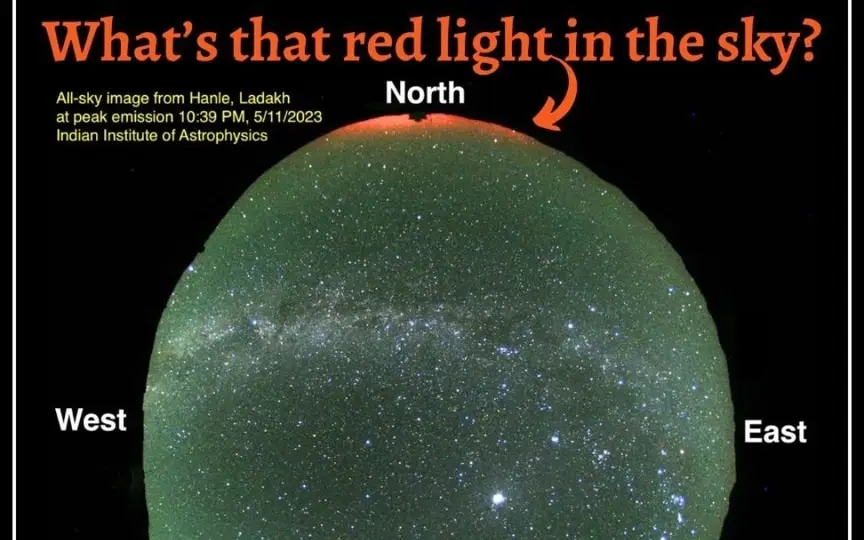Awe-Inspiring Solar Storm Auroras Captured in India!
The Earth experienced a triple threat from CMEs emitted by the Sun on November 5 and 6, all of which made direct contact with the planet. This resulted in a hazardous G3-class geomagnetic storm. Interestingly, the effects of the solar storm persisted until November 7, slightly deteriorating to a G2-class storm. Unlike minor G1 or G2 solar storms, G3 storms have the potential to disrupt signals and damage sensitive instruments by creating drag in the upper atmosphere and affecting smaller satellites. Although no incidents were reported this time, the G3 solar storm produced breathtaking auroras visible in various parts of the world, including Ladakh, India.
Rare aurora borealis
The Indian Astronomical Observatory (IAO), run by the Indian Institute of Astrophysics at Hanle, captured spectacular and rare red aurora borealis on the eve of November 5. The aurora borealis started around 22:00 IST and lasted for almost 40 minutes. It was captured by the observatory’s All-Sky Camera. It has been attributed to a SAR event where red streaks of light appear instead of the usual green-blue lights.
A similar camera at Merak, on the banks of the Pangong Tso in Ladakh, also captured this light, although it was limited by higher mountains to the north.
Why are the red northern lights special?
Red auroras are much rarer than green because they require a higher level of energy to produce. These aurora borealis are created by the collision of high-altitude oxygen and nitrogen molecules and emit light in the red part of the spectrum.
Other places
Amazingly, Ladakh was not the only place to witness this spectacle. Red auroras were also captured in Peru, revealed Tamitha Skov, a renowned space weather physicist who previously worked with NASA.
In addition, this rare phenomenon was also seen in parts of Italy and Slovakia. On the other hand, places as far south as Colorado and Texas saw another phenomenon – a purple beam of light known as Strong Thermal Emission Velocity Enhancement (STEVE). It is an optical phenomenon similar to the Aurora, in which a purple line of light can be seen in the night sky. It is usually seen together with Aurora.




